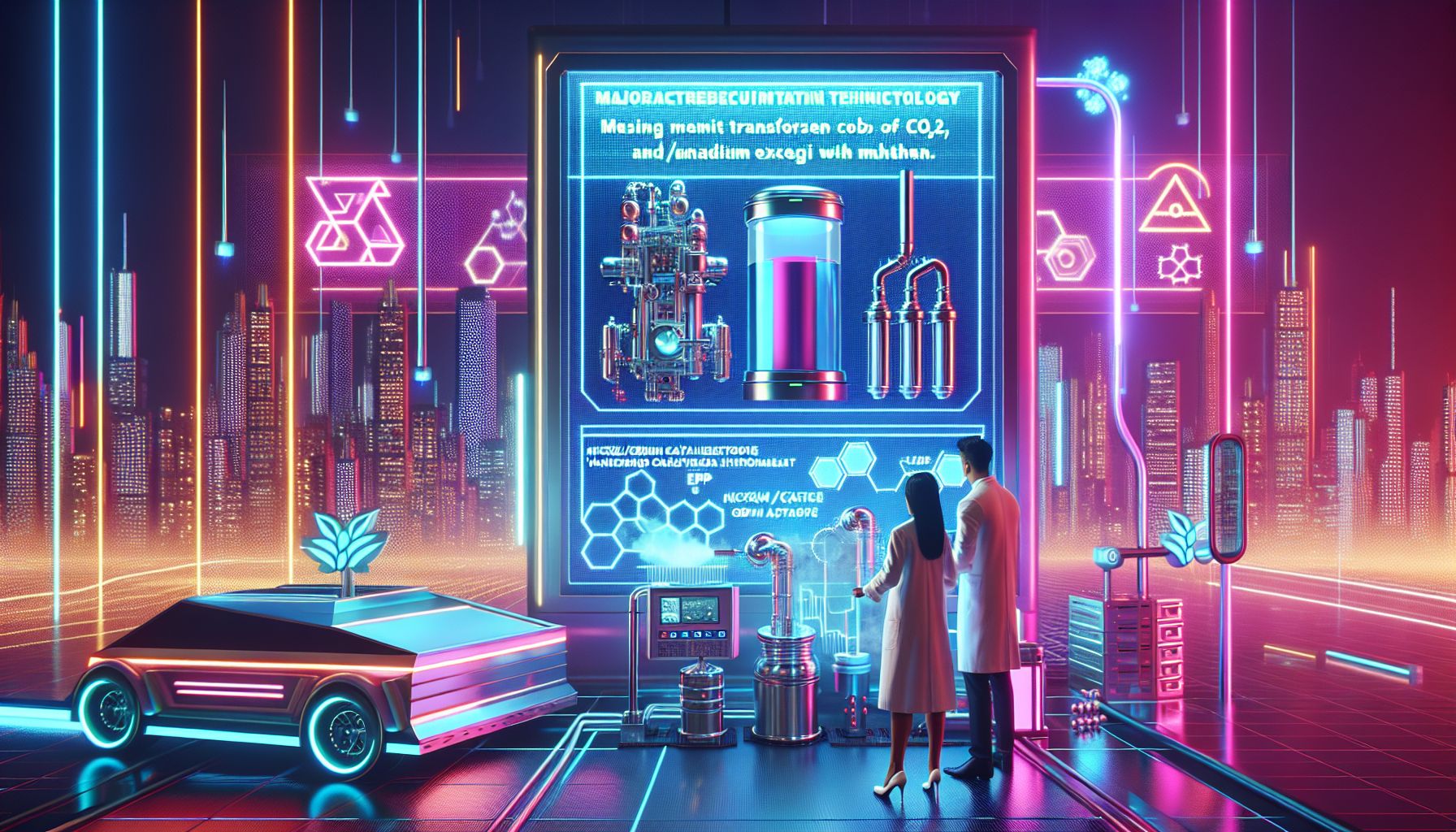Turning Carbon Dioxide Into Treasure: Methane Conversion Breakthrough

London, Wednesday, 16 July 2025.
Researchers have discovered a method to transform CO2 emissions into methane using a nickel/cerium oxide catalyst and vanadium for hydrogen storage. This could revolutionise industrial carbon management, reducing emissions and creating renewable fuel.
Introduction to Methane Conversion Advancement
So here we are, venturing into a realm where science fiction nearly meets reality! Imagine transforming pesky CO2 emissions into valuable methane—a bit like turning dust into gold for the energy market. Researchers have recently hit upon a novel method to convert carbon dioxide efficiently into methane, utilising a nickel/cerium oxide (Ni/CeO2) catalyst with a dash of vanadium powder for hydrogen storage [1].
Innovative Catalyst and H2 Storage
Let’s dive into the nuts and bolts of this invention. The magic lies in the Ni/CeO2 catalyst’s ability to play well with hosted hydrogen from vanadium powder, thus facilitating methanation. This whole process is rather like a well-coordinated juggling act where the Ni/CeO2 catalyst adsorbs the carbon monoxide (CO), and the vanadium powder stores hydrogen at a mild 50°C. Next comes the show-stopper: raising the temperature makes vanadium release hydrogen, which helps convert adsorbed CO to methane [1].
Balance and Efficiency Challenges
Despite the glittering prospects, it’s not all rainbows and unicorns. As much as 76% of the CO fed into this system transforms into methane, which sports a substantial efficiency for a process involving industrially challenging reactions [1]. However, repeated cycles hit some snags due to materials taking on foul issues like surface oxidation of vanadium—imagine our friendly vanadium getting a tad rusty—and unpleasant interactions between vanadium, oxygen, and cerium [1].
Broader Implications and Industrial Impact
The implications of this breakthrough could echo across many industrial sectors, including energy and manufacturing, providing a roadmap for reducing carbon emissions while producing clean energy. Imagine loading up outdated factories with this technology and watching them birth green methane magic! It’s a potential game-changer in how industries manage carbon emissions, thanks to their ability to turn an environmental headache into a renewable asset [1][3].
Conclusion: A Step Forward in Carbon Management
As we peek into the future, one can’t help but wonder how far this technology might take us in combatting climate change. Such advancements could pave the way for marrying cutting-edge science with industrial applications, making the Earth a cleaner, more sustainable habitat for all. In the grand quest to depollute our cities and clean the skies, every little experiment helps, especially one that turns carbon into a friendlier, more productive neighbour [1][2][3].